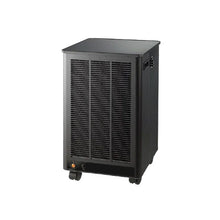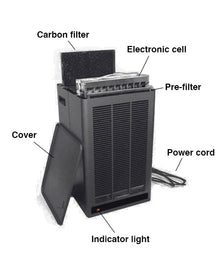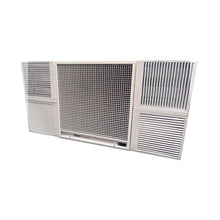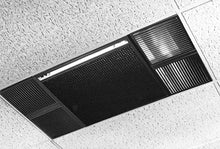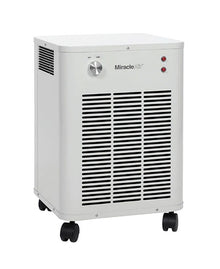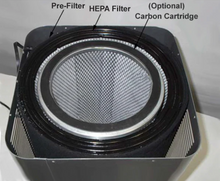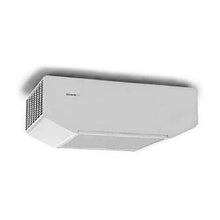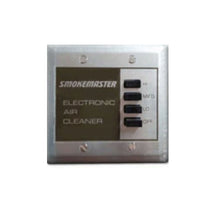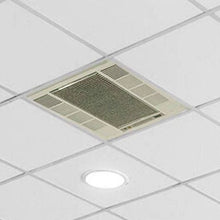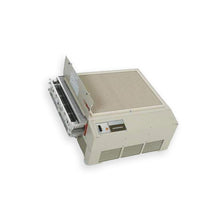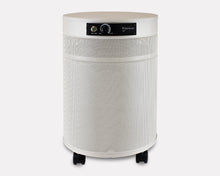Communicating Your Clean Air Commitment: How to Reassure Employees and Customers

Breathing Easy: Your Guide to Building Trust Through Transparent Air Quality Initiatives
In today's world, the quality of the air we breathe has moved from an invisible concern to a prominent topic of conversation. Whether it's the lingering effects of a global pandemic, increasing awareness of environmental factors, or simply a desire for healthier indoor spaces, people are more attuned than ever to the air around them. For businesses, this heightened awareness presents both a challenge and a significant opportunity. How do you effectively communicate your commitment to clean air and, in doing so, reassure your employees and customers that their well-being is a top priority?
At Commercial Air Purifiers, LLC, we understand that providing clean air isn't just about installing the right equipment; it's about building trust. It's about demonstrating a genuine commitment that resonates deeply with the people who walk through your doors every day. This comprehensive guide will equip you with the strategies and insights you need to effectively showcase clean air initiatives, foster employee reassurance about air quality, and cultivate deep customer trust through air filtration and transparent communication.
The Invisible Concern: Why Air Quality Matters More Than Ever
For too long, indoor air quality was an afterthought, an invisible component of our built environments. However, research increasingly reveals the profound impact of indoor air pollutants on health, productivity, and overall well-being. From volatile organic compounds (VOCs) off-gassing from furniture and cleaning products to allergens like pollen and pet dander, and even airborne viruses and bacteria, the air inside our buildings can be significantly more polluted than outdoor air.
Consider these facts: The U.S. Environmental Protection Agency (EPA) states that indoor air can be 2 to 5 times, and sometimes even 100 times, more polluted than outdoor air. Source: U.S. EPA - The Inside Story: A Guide to Indoor Air Quality This isn't just an abstract statistic; it translates into tangible impacts on health, leading to symptoms such as headaches, fatigue, dizziness, and irritation of the eyes, nose, and throat. Long-term exposure can contribute to more serious respiratory diseases, heart disease, and even cancer.
For businesses, these health concerns directly translate into operational challenges. Reduced employee productivity due to illness, increased absenteeism, and a general feeling of unease among staff can significantly impact your bottom line and workplace morale. Furthermore, customers are becoming increasingly discerning, choosing establishments that visibly prioritize health and safety. The problem isn't just about clean air; it's about the perceived safety and trustworthiness of your environment.
Breathing Life into Your Business: Strategies for Communicating Clean Air
Simply having a good air filtration system isn't enough; you need to effectively communicate your efforts. As Commercial Air Purifiers, LLC, we've seen firsthand how a well-articulated clean air strategy can transform perceptions and build lasting loyalty. Here are detailed strategies to help you effectively communicate your commitment:
1. Transparency is Your Strongest Filter: Openly Share Your Initiatives
The foundation of trust is transparency. Don't assume people will notice your efforts; actively tell them.
-
Dedicated Communication Channels: Create a specific section on your website or a dedicated landing page detailing your air quality initiatives. This should be easy to find and navigate. For example, a page titled "Our Commitment to Clean Air" or "Healthy Environment Pledge."
-
Signage and Displays: Prominently display clear, concise signage in your lobby, waiting areas, and common spaces. These signs can highlight the type of air purification technology you're using (e.g., "Our Building Uses MERV-13 Filtration for Enhanced Air Quality" or "Breathe Easy: We've Installed Advanced HEPA Air Purifiers"). Consider digital displays that cycle through information about your system, maintenance schedules, and air quality benefits.
-
Regular Updates: Share updates through internal newsletters for employees and via email marketing or social media for customers. Keep them informed about new installations, maintenance schedules, and the science behind your systems.
-
Live Air Quality Monitoring (Where Applicable): For businesses with sophisticated systems, consider displaying real-time indoor air quality data (e.g., particulate matter levels, CO2 levels) on public screens. This provides undeniable proof of your commitment and empowers individuals with information. While this might be a more advanced step, it can be incredibly powerful for building confidence.
2. Educate, Don't Just Announce: Empowering Your Audience with Knowledge
People are more likely to trust what they understand. Break down complex information into digestible, relatable terms.
-
Explain the "Why": Don't just say you have air purifiers; explain why they are important. Discuss the types of pollutants they remove (allergens, dust, viruses, odors) and the health benefits (reduced allergies, fewer respiratory issues, improved concentration).
-
Demystify the Technology: Briefly explain the technology you're using. For instance, if you use HEPA filters, explain that HEPA (High-Efficiency Particulate Air) filters can capture at least 99.97% of airborne particles 0.3 micrometers in size. Source: U.S. EPA - Air Cleaners and Air Filters in the Home This level of detail, presented simply, builds credibility.
-
Focus on Benefits, Not Just Features: Instead of saying "we have a MERV-13 filter," say "our MERV-13 filters capture a higher percentage of airborne particles, helping to reduce the spread of airborne contaminants and improve overall respiratory health for everyone in our space."
-
Offer Q&A Opportunities: Host town halls for employees or create a dedicated email address where customers can ask questions about your air quality initiatives. Promptly and thoroughly addressing concerns demonstrates genuine care.
3. Employee Reassurance: Cultivating a Healthy and Productive Workforce
Your employees are your most valuable asset. Their peace of mind regarding air quality is paramount for their well-being, productivity, and retention.
-
Internal Communication Campaigns: Launch an internal campaign dedicated to air quality. This can include informational sessions, digital posters on internal networks, and features in company newsletters.
-
Leadership Endorsement: Have senior leadership visibly champion the clean air initiatives. A message from the CEO or a department head emphasizing the importance of a healthy work environment carries significant weight.
-
Employee Feedback Loops: Create avenues for employees to provide feedback or voice concerns about air quality. This could be through anonymous surveys, suggestion boxes, or direct communication with HR. Acting on this feedback reinforces their value.
-
Training and Education: Educate managers and team leaders so they can confidently answer questions from their teams and reinforce the company's commitment. Consider short, engaging training modules.
-
Showcase Employee Testimonials (with permission): If employees feel genuinely better due to improved air quality, ask if they'd be willing to share their positive experiences internally or even externally (with their consent).
4. Customer Trust: Building Loyalty Through a Health-Conscious Environment
Customers are increasingly making purchasing decisions based on perceived safety and health. Your clean air commitment can be a significant differentiator.
-
Marketing Messaging: Integrate your clean air commitment into your marketing and branding. This could be a tagline, a dedicated section on your brochures, or mentions in advertising. For example, a restaurant might advertise "Enjoy Our Dishes in a Fresh, Clean Air Environment."
-
Public Relations Opportunities: Pitch stories to local media about your investment in air quality. This can generate positive publicity and position your business as a community leader in health and safety.
-
Collaborate with Health Experts: Partner with local health organizations or experts for informational events or to lend credibility to your initiatives. For instance, a local doctor could provide a testimonial about the importance of good indoor air quality.
-
Case Studies/Testimonials: If applicable, share stories (with permission) of how your clean air initiatives have positively impacted customers, perhaps by reducing allergy symptoms during their visits or simply providing a more comfortable environment.
-
Leverage Certifications: If your air purification systems or building standards come with certifications (e.g., WELL Building Standard, LEED, specific air purifier certifications), proudly display them. These third-party validations significantly enhance trust.
The Science Behind the Solution: How Air Purifiers Make a Difference
As Commercial Air Purifiers, LLC, we advocate for solutions that are backed by science. While various strategies contribute to good indoor air quality, the strategic deployment of commercial-grade air purifiers plays a critical role.
Air purifiers work by drawing in air, filtering out contaminants, and then releasing cleaner air back into the space. The effectiveness largely depends on the type of filtration technology employed.
-
HEPA Filtration: As mentioned, HEPA filters are highly effective at capturing microscopic particles. This is crucial for addressing common allergens like pollen, dust mites, pet dander, and mold spores, as well as fine particulate matter (PM2.5) from outdoor pollution or indoor activities. A study published in The Journal of Allergy and Clinical Immunology demonstrated that HEPA air purifiers can significantly reduce indoor allergen levels, leading to improved symptoms for individuals with allergic asthma. [Source: Sublett, J. L. (2001). Indoor allergens. The Journal of Allergy and Clinical Immunology, 107(3), 405-412. (Note: While this specific study may be older, the efficacy of HEPA filtration for allergen reduction is a well-established principle in more recent research.)]
-
Activated Carbon Filters: These filters are essential for removing odors and volatile organic compounds (VOCs). VOCs are gases emitted from various products and processes, including paints, cleaning supplies, and office equipment, and can cause headaches, nausea, and long-term health issues. Activated carbon works by adsorption, trapping these gaseous pollutants.
-
UV-C Light (Ultraviolet Germicidal Irradiation): Some advanced commercial air purifiers incorporate UV-C light, which can inactivate airborne bacteria and viruses. When used in conjunction with HEPA and carbon filtration, UV-C provides an additional layer of protection against biological contaminants. Research has shown the efficacy of UV-C in reducing airborne microorganisms in various settings. [Source: U.S. CDC - Environmental Control for Tuberculosis: Basic Upper-Room Ultraviolet Germicidal Irradiation Guidelines for Healthcare Settings (2009) - While older, the principles of UVGI remain relevant and are foundational to modern applications.]
-
Understanding Air Changes Per Hour (ACH): The effectiveness of an air purification system isn't just about the filter type; it's also about its capacity. Air Changes Per Hour (ACH) measures how many times the entire volume of air in a space is filtered per hour. For optimal health benefits, particularly in high-traffic areas or spaces prone to higher pollutant levels, aiming for higher ACH rates is recommended. Commercial Air Purifiers, LLC helps businesses assess their unique needs and recommend systems that achieve appropriate ACH for their specific environments.
Putting It Into Practice: Real-World Examples
Imagine a bustling co-working space in a major city. Participants are concerned about shared air given the density of people and external pollution. By installing commercial-grade air purifiers with HEPA and activated carbon filters, and then visibly communicating this through clear signage, email updates, and even a "clean air corner" with informational brochures, the co-working space can turn a potential concern into a competitive advantage. Members feel more comfortable and productive, knowing the management is proactive about their health.
Another example is a restaurant. With the aroma of food and the constant flow of customers, air quality can quickly degrade. By implementing robust air purification, especially systems that tackle odors and airborne particles, the restaurant not only creates a more pleasant dining experience but also reassures diners that their health is considered. They might add a small note on their menu or a QR code linking to their air quality page, subtly reinforcing their commitment.
These aren't just theoretical benefits. Businesses that invest in and effectively communicate their clean air strategies often report improved employee morale, reduced sick days, and enhanced customer satisfaction and retention. This is where the practical application of our recommendations from Commercial Air Purifiers, LLC truly shines.
The Path Forward: Your Next Steps to Clearer Air and Greater Trust
Building a clean air commitment isn't a one-time event; it's an ongoing process. As Commercial Air Purifiers, LLC, we believe it's an investment that pays dividends in employee well-being, customer loyalty, and overall business resilience.
Here are your actionable steps:
-
Assess Your Current Air Quality: Understand your starting point. This might involve professional indoor air quality assessments to identify specific pollutants or areas for improvement.
-
Invest in Appropriate Solutions: Based on your assessment, choose the right air purification technologies and systems for your space. Consider factors like room size, existing HVAC, and specific pollutant concerns. This is where expertise from providers like Commercial Air Purifiers, LLC becomes invaluable in selecting the most effective and efficient systems.
-
Develop a Communication Plan: Outline how, when, and where you will communicate your clean air initiatives to both internal and external audiences. Make it comprehensive and consistent.
-
Train Your Team: Ensure your employees, especially customer-facing staff, understand your air quality efforts so they can confidently speak about them.
-
Monitor and Maintain: Regular maintenance of air filtration systems is critical for their effectiveness. Communicate your maintenance schedules to show ongoing commitment.
-
Gather Feedback: Continuously solicit feedback from employees and customers to refine your approach and demonstrate responsiveness.
Breathe Easy, Build Trust: A Clear Vision for Your Business
In an era where health and well-being are top priorities, communicating your clean air commitment is no longer optional—it's essential for building a thriving business. By prioritizing showcasing your clean air initiatives, providing genuine employee reassurance about air quality, and cultivating deep customer trust through air filtration and transparent communication, you're not just investing in technology; you're investing in your people, your reputation, and your future.
At Commercial Air Purifiers, LLC, we are dedicated to empowering businesses with the solutions and knowledge to achieve superior indoor air quality. We believe that when people can breathe easy, they can work better, shop longer, and feel truly comfortable in your space. Let's work together to create environments where trust is built on a foundation of clean, healthy air.
FAQ Section: Common Air Quality Concerns
Q1: How often should air filters be changed in commercial air purifiers?
A1: The frequency of filter changes depends on the type of filter, the size of the space, and the level of air pollution. Generally, HEPA filters may last 12-18 months, while activated carbon filters might need replacement every 6-12 months. Pre-filters should be checked and cleaned/replaced more frequently, often monthly. It's crucial to follow the manufacturer's recommendations and monitor system performance.
Q2: Can air purifiers really help with airborne viruses?
A2: While no single solution can entirely prevent the transmission of airborne viruses, commercial air purifiers equipped with HEPA filters are highly effective at capturing airborne particles, including respiratory droplets that can carry viruses. Some advanced systems also incorporate UV-C germicidal irradiation, which can inactivate viruses and bacteria as air passes through the unit. They are a valuable component of a comprehensive indoor air quality strategy.
Q3: What's the difference between an air purifier and an HVAC filter?
A3: HVAC filters are designed primarily to protect the HVAC system itself from dust and debris, and secondarily to improve indoor air quality. While upgrading HVAC filters to higher MERV ratings can help, dedicated standalone commercial air purifiers often have multi-stage filtration (including true HEPA and activated carbon) and higher Clean Air Delivery Rate (CADR) ratings, making them more effective at removing a wider range of pollutants and rapidly cleaning the air in specific zones.
Q4: How do I know what type of air purifier is best for my business?
A4: The best air purifier for your business depends on factors such as the size of your space, the specific pollutants you're concerned about (e.g., allergens, odors, viruses), the number of occupants, and your existing ventilation system. Consulting with air quality experts, like those at Commercial Air Purifiers, LLC, can help you conduct an assessment and recommend the most effective and efficient solutions tailored to your unique needs.
Q5: Is investing in air quality a good return on investment?
A5: Absolutely. Investing in superior indoor air quality can lead to a significant return on investment through various benefits: reduced employee sick days and improved productivity, enhanced customer satisfaction and loyalty, a stronger brand reputation as a health-conscious establishment, and potentially lower long-term health-related costs. It's an investment in the health of your people and the long-term success of your business.
About the Author: This article was developed by the team at Commercial Air Purifiers, LLC. With years of experience and a deep understanding of indoor air quality science and technology, Commercial Air Purifiers, LLC is dedicated to providing businesses with cutting-edge air purification solutions and expert guidance. Our mission is to help organizations create healthier, safer, and more productive environments for their employees and customers. We pride ourselves on offering tailored solutions and transparent, science-backed advice to meet the unique air quality challenges of diverse commercial spaces.

